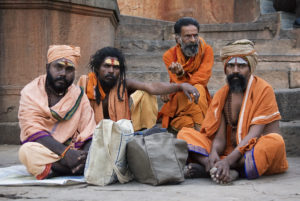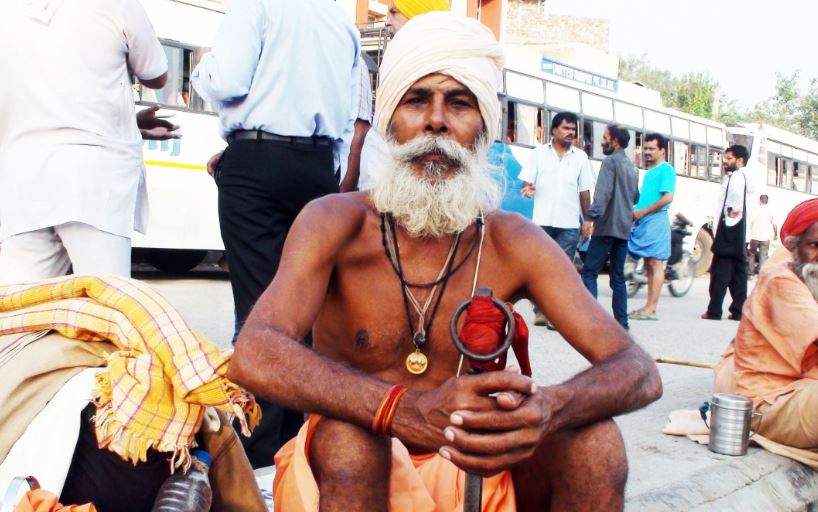Sadhu is a common name for an ascetic or someone that practices intense yoga. The word “sadhu” comes from the Sanskrit meaning “to practice.” Sadhus are often referred to as the “Holy Men of India.”
A sadhu dedicates his life to achieving spiritual liberation
In doing this he gives up the first three goals of Hindu life and renounces his worldly existence. These goals are karma (pleasure), artha (practical objectives), and dharma (duty). To achieve liberation one must meditate and contemplate over God in a constant state of manner. As monks and nuns move to a simpler life when turning over to God, sadhus do the same also. They wear minimal clothing that is of saffron color as a symbol of their renunciation. Because sadhus give up their worldly possessions they survive mainly on alms that are afforded by their families and other believers. These alms are known as bhiksha. Most sadhus are found to be living in caves, forests, the mountains, and temples all over India.
Sadhus are divided or organized into hundreds of different sects but most follow Lord Shiva or Lord Vishnu. Lord Shiva is the destroyer of evil and the God of transformation. He is known as the God of the yogis. Lord Vishnu is known as the preserver of the universe and represents mercy and goodness. Sadhus detach themselves from worldly life and dedicate their lives to the God of their choice. They spend their days in devotion to the Creator, aspiring to reach enlightenment.
Rituals and Magical Rites Performed by Sadhus
Some sadhus perform rituals and magical rites to invoke spirits and make contact with the Gods. Rigorous yoga and meditation are also practiced to acquire mystical knowledge and to strengthen spiritual powers. Although not all Sadhus reach enlightenment, many believers respect them as holy and some even as “gods on earth.” It is believed that one only has to “honor” a sadhu in order to receive his blessings and a small impression of his spiritual energies.
 Sadhus smear their bodies with ash, anoint their foreheads with sandalwood paste, and travel from one holy place to another with their very few material possessions that include a begging bowl, a woolen blanket, a wooden staff, and a Rudraksha or Tulsi Mala around their necks or wrists. Rudraksha or Tulsi Mala is the equivalents of the Catholic Rosary or the Prayer Beads that are used by Buddhists when chanting or meditating upon higher spiritual powers. Rudraksha translates as “Shiva’s Eye” or that which is “pleasing to the eye of Shiva” and Mala is translated as “garland of flowers.”
Sadhus smear their bodies with ash, anoint their foreheads with sandalwood paste, and travel from one holy place to another with their very few material possessions that include a begging bowl, a woolen blanket, a wooden staff, and a Rudraksha or Tulsi Mala around their necks or wrists. Rudraksha or Tulsi Mala is the equivalents of the Catholic Rosary or the Prayer Beads that are used by Buddhists when chanting or meditating upon higher spiritual powers. Rudraksha translates as “Shiva’s Eye” or that which is “pleasing to the eye of Shiva” and Mala is translated as “garland of flowers.”
Most sadhus spend the majority of their time in meditation and travel alone. Some will travel in small groups and gather for holy festivals. Many sadhus can be seen on the streets of India chanting mysterious mantras. Today there are approximately four to five million sadhus living in India.
Sources:
www.indiasite.com
www.religionfacts.com
www.nationalgeographic.com
www.dsc.discovery.com






